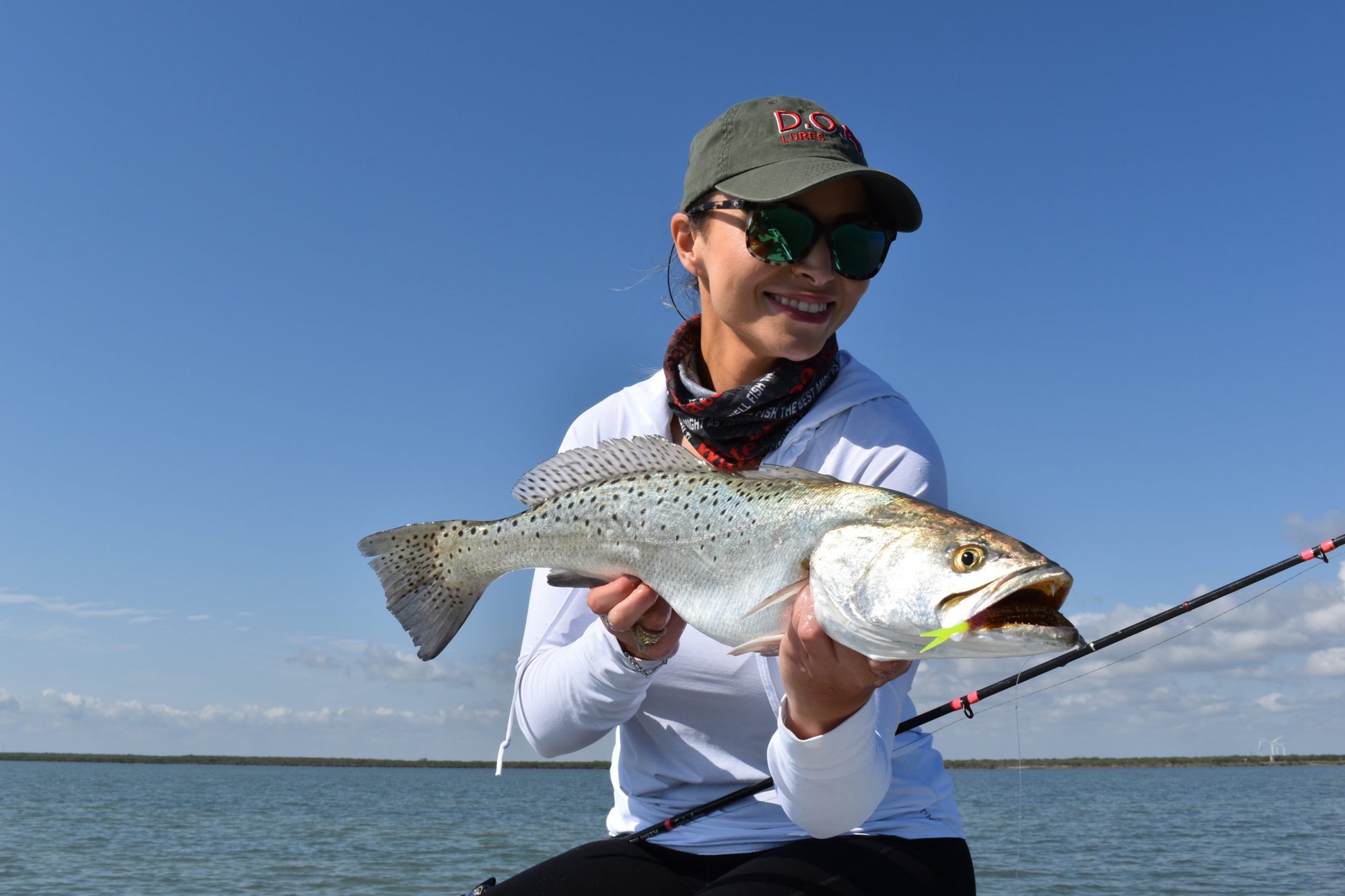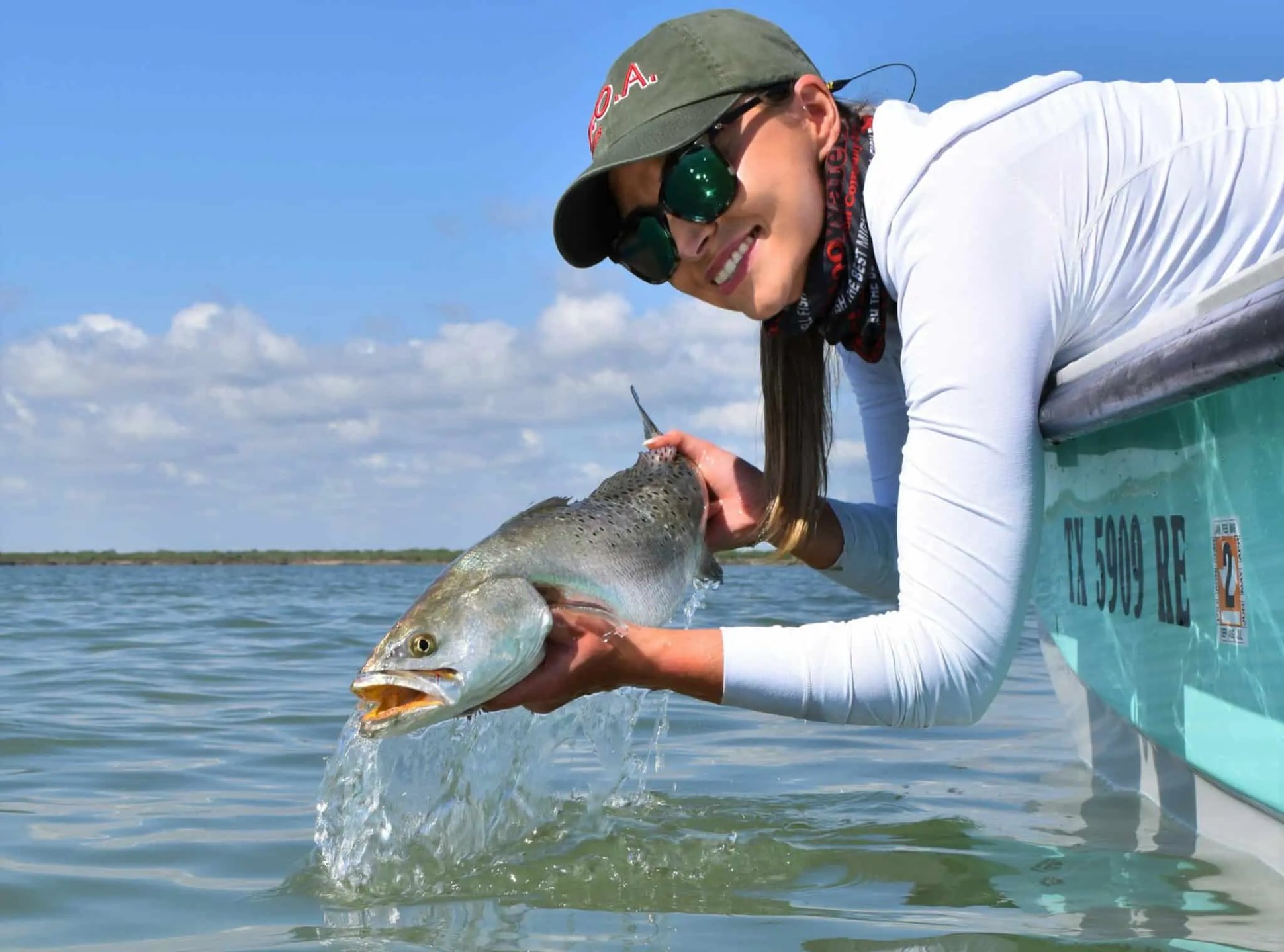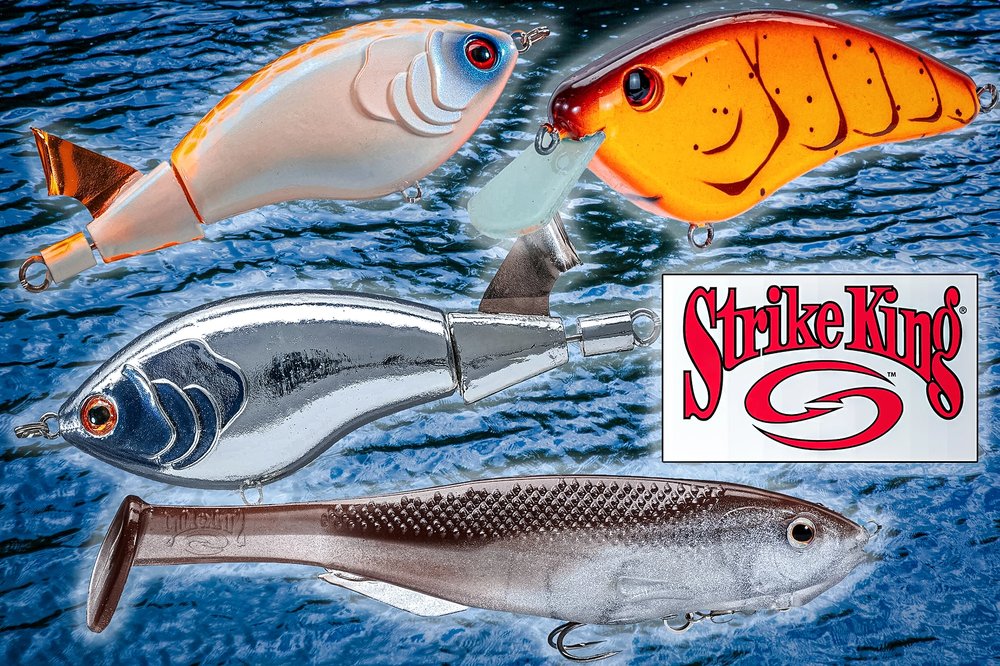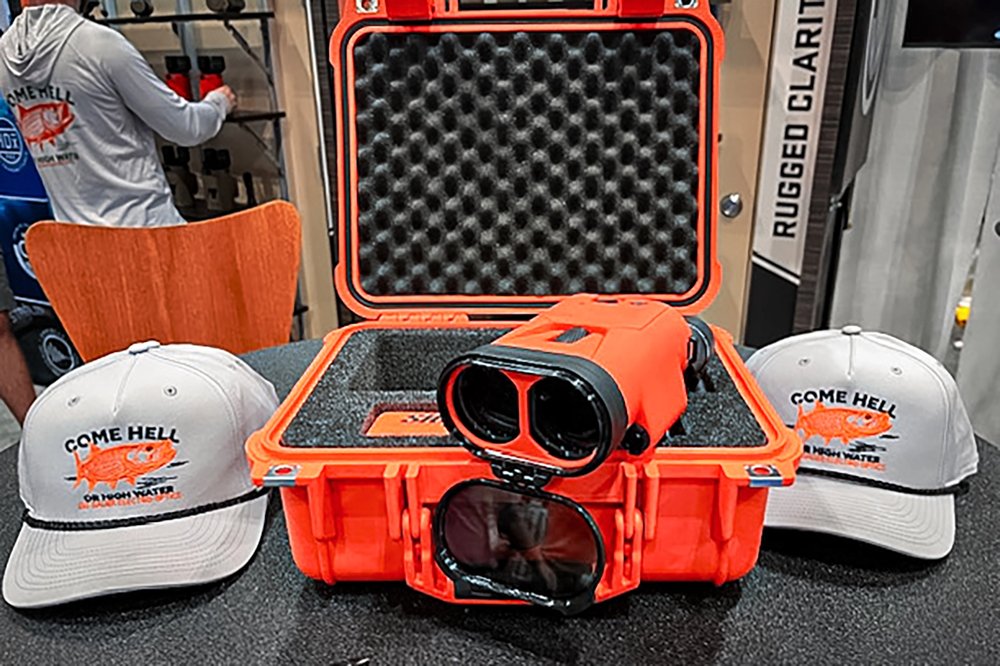Extra care is needed this year for the Laguna Madre sea trout population
“It’s not a red!” shouted an excited Taylor Garcia, as a huge silver flash resembling a seatrout emerged from the water. For most of the fight the fish stayed low beneath the surface keeping a rounded arc in her rod, indicating it was one of several redfish she and Captain Luis Flandes had plucked from an oyster bar for most of the morning. After finessing the big sow boatside careful not to excite it into thrashing, Luis netted up the relatively calm 27” fish for Taylor to hold for a quick photo. “She’s beautiful,” she admired, lifting the jumbo sized seatrout as I snapped a burst of photos. “Get any good ones?” she asked. “Think so,” I replied, reviewing my camera screen. “Ok then let’s get her back in quick,’ she advised, “We need these big mommas now more than ever.”
The deep arctic freeze that incapacitated most of Texas this past February had an equally devastating effect on its inshore fishery. With Texas Parks & Wildlife Department surveys estimating an almost 4 million dead fish washed ashore along the Texas coast, the long term ecological impact is still not clear, but initial reports indicate non-recreational species contributed to the majority of mortality at around 90 % of all fish killed with game species accounting for the latter. While official numbers show the Lower Laguna Madre lost over 100,000 spotted seatrout, anglers are finally reporting some catches of mature fish providing a positive outlook into their future survival. The majority of these fish are believed to be groupings that had long term access to deeper water during the freeze in areas where insulating water temperatures like the Brownsville Ship Channel and other pockets of deep water could provide refuge.


“It’s different,” said Flandes, as we worked light 1/8th DOA jigs across a grass flat. “With most of my trout spots I could bring clients here and catch a limit of keeper trout very quickly and still have time to move on to other areas for redfish. Now instead of a dozen or so fish in a half an hour it’s more like three or four in an hour.” As a result of the freeze impacts the TPWD imposed an emergency order with a new three-fish trout harvest limit as opposed to the current five-fish limit along with size restrictions of 17-23 inches up from the current 15-25 inches with one over 25 inches. The changes were put in place to help promote more mature fish availability this summer for spawning. With the warm months just a few weeks away, the Lonestar’s vulnerable big trout population will need extra care from the large amount of anglers officials are expecting to be on the water this summer. Below are 3 tips for how we can do our part.
1. Landing the Fish
During summer water temperatures on the shallow Laguna can practically boil with averages reaching around 80 degrees (Fahrenheit) dropping DO (dissolved oxygen) levels to their seasonal lowest. When a large seatrout is hooked and begins putting up a fight, its body’s need for more oxygen rapidly begins to increase putting it in a state of stress if the demand is not adequately met. Think of a mortality clock that’s started to tick. The decisions you make next can increase or decrease its chance of surviving. First, wet your hands in the water before reaching for the fish to protect its slime coat. Lift it using both hands, with one hand supporting under its head and the other behind the belly near the midpoint of the tail. A good grip over the back behind the shoulders will also work as well. Don’t squeeze its belly and don’t “hang” it by a gripper or scale. Fish live in a zero gravity environment with no internal support structure. The weight alone of a large trout hanging vertically can cause internal injuries and damage to the connective tissue that supports its jaw.
2. Photos
Most of us rarely experience the euphoria of holding a giant trout for a photo, but when the opportunity arrives, being prepared may prevent an unfortunate loss to an incredible trophy. Always keep your camera or phone within arm’s reach so that photos can be taken quickly and easily. Keeping a fish suspended or laying on a boat deck while you dig around for the Nikon should be out of the question. Prolonged time out of the water can lead to hypoxia or temperature stress, caused by the fish’s inability to breathe out of water. Think the scenario out in advance: Are you fishing alone or with a partner? If you’re fishing with a buddy, then inform them in advance where the camera, and dehooking tools are kept on your boat. If you’re wading, it’s a good idea to have a waterproof camera attached around your neck. This will prevent having to make a long hike back to the boat for it, which under the hot sun could mean a death sentence for a large seatrout. Take a few quick pictures then ease the fish back into the water, and then make a few drops that completely submerge its body. This will help keep it cool so that you can take a few more shots before releasing it.
3. Releasing the Fish
Ease the fish back down into the water using both hands keeping a hold of the tail. Gently push the fish forward in the water lightly forcing water through its gills. Don’t pull backward. If you’re in an area next to a drop off or channel, try to revive the fish near the deeper areas where the water temperature is cooler. Once the fish can pull free from a loose hand, it should be home free.
Now that we are fishing, let's not break any laws. Click here to read about most commonly broken laws.



